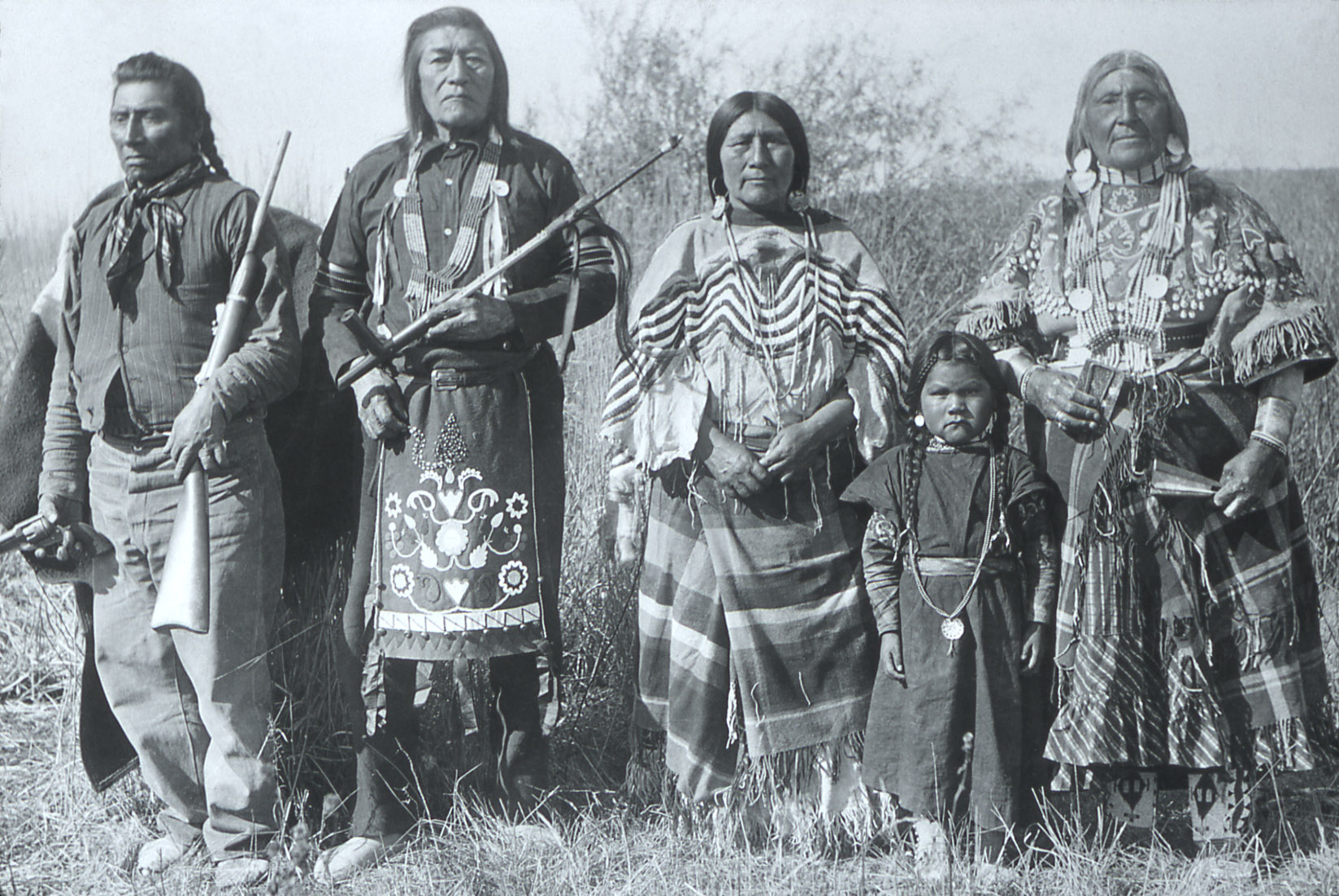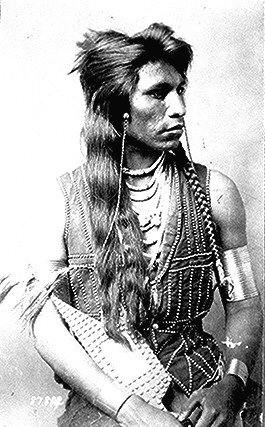|
Madison Buffalo Jump State Park
Madison Buffalo Jump State Park is a Montana state park located seven miles south of the Interstate 90 interchange at Logan in Gallatin County, Montana in the United States. The park preserves a canyon cliff used by Native Americans as a buffalo jump, where herds of bison were stampeded over the cliff as an efficient means of slaughter. The main geographic features of the jump site remain largely unchanged since the days of the jumps. Archaeologists have found tons of bison bones buried at the base of the cliffs. They have also uncovered the remains of tipi villages. History The buffalo jump at Madison Buffalo Jump State Park was used by numerous Native American tribes for approximately 2000 years, dating as far back as 500 B.C. and ending around 1750 A.D. The indigenous peoples stampeded the herds of bison off the cliff without the aid of horses or guns. They used the bison for food, clothing, provisions and shelter. The bison were forced into a stampede by young men know ... [...More Info...] [...Related Items...] OR: [Wikipedia] [Google] [Baidu] |
List Of Montana State Parks
This is a list of state parks and reserves in the Montana state park system, in the United States. Current parks Former state parks Parker Homestead State Park in Jefferson County reverted to private ownership in 2010. See also * List of U.S. national parks References External links Montana State ParksMontana Fish, Wildlife & Parks {{Protected Areas of Montana Montana State parks State parks are parks or other protected areas managed at the sub-national level within those nations which use "state" as a political subdivision. State parks are typically established by a state to preserve a location on account of its natural ... Protected areas of Montana Tourist attractions in Montana ... [...More Info...] [...Related Items...] OR: [Wikipedia] [Google] [Baidu] |
Gallatin County, Montana
Gallatin County is located in the U.S. state of Montana. With its county seat in Bozeman, it is the second-most populous county in Montana, with a population of 118,960 in the 2020 Census. The county's prominent geographical features are the Bridger mountains in the north, and the Gallatin mountains and Gallatin River in the south, named by Meriwether Lewis in 1805 for Albert Gallatin, the United States Treasury Secretary who formulated the Lewis and Clark Expedition. At the southern end of the county, West Yellowstone's entrance into Yellowstone National Park accounts for around half of all park visitors. Big Sky Resort, one of the largest ski resorts in the United States, lies in Gallatin and neighboring Madison counties, midway between Bozeman and West Yellowstone. History During the territorial era, a small patch of land known as "Lost Dakota" existed as a remote exclave of Dakota Territory until it was transferred to Gallatin County, Montana Territory, in 18 ... [...More Info...] [...Related Items...] OR: [Wikipedia] [Google] [Baidu] |
Shelter
Shelter is a small building giving temporary protection from bad weather or danger. Shelter may also refer to: Places * Port Shelter, Hong Kong * Shelter Bay (other), various locations * Shelter Cove (other), various locations * Shelter Island (other), various locations * Shelter Point, South Georgia Island Arts, entertainment, and media Films * ''Shelter'' (1937, 1955, 1979), Encyclopædia Britannica education shorts - see List of Encyclopædia Britannica Films titles * ''Shelter'', a 1998 film starring John Allen Nelson * ''Shelter'' (2007 film), by Jonah Markowitz * ''Shelter'' (2010 film), directed by Måns Mårlind and Björn Stein * ''Shelter'' (2012 film), directed by Adam Caudill and Wrion Bowling * ''Shelter'' (2014 film), written and directed by Paul Bettany * ''Shelter'', a 2016 short film produced by A-1 Pictures * ''Shelter'', a 2017 film produced by Eran Riklis Literature * ''Shelter'', a 1941 novel by Marguerite Steen * ''S ... [...More Info...] [...Related Items...] OR: [Wikipedia] [Google] [Baidu] |
Blackfeet
The Blackfeet Nation ( bla, Aamsskáápipikani, script=Latn, ), officially named the Blackfeet Tribe of the Blackfeet Indian Reservation of Montana, is a federally recognized tribe of Siksikaitsitapi people with an Indian reservation in Montana. Tribal members primarily belong to the Piegan Blackfeet (Ampskapi Piikani) band of the larger Blackfoot Confederacy that spans Canada and the United States. The Blackfeet Indian Reservation is located east of Glacier National Park and borders the Canadian province of Alberta. Cut Bank Creek and Birch Creek form part of its eastern and southern borders. The reservation contains 3,000 square miles (7,800 km2), twice the size of the national park and larger than the state of Delaware. It is located in parts of Glacier and Pondera counties. History The Blackfeet settled in the region around Montana beginning in the 17th century. Previously, they resided in an area of the woodlands north and west of the Great Lakes. Pressure ex ... [...More Info...] [...Related Items...] OR: [Wikipedia] [Google] [Baidu] |
Cheyenne
The Cheyenne ( ) are an Indigenous people of the Great Plains. Their Cheyenne language belongs to the Algonquian languages, Algonquian language family. Today, the Cheyenne people are split into two federally recognized tribe, federally recognized nations: the Southern Cheyenne, who are enrolled in the Cheyenne and Arapaho Tribes in Oklahoma, and the Northern Cheyenne, who are enrolled in the Northern Cheyenne Tribe of the Northern Cheyenne Indian Reservation in Montana. The Cheyenne comprise two Native Americans in the United States, Native American tribes, the Só'taeo'o or Só'taétaneo'o (more commonly spelled as Suhtai or Sutaio) and the Tsétsêhéstâhese (also spelled Tsitsistas, The term for the Cheyenne homeland is ''Tsiihistano''. Language The Cheyenne of Montana and Oklahoma speak the Cheyenne language, known as ''Tsêhésenêstsestôtse'' (common spelling: Tsisinstsistots). Approximately 800 people speak Cheyenne in Oklahoma. There are only a handful of vocabulary d ... [...More Info...] [...Related Items...] OR: [Wikipedia] [Google] [Baidu] |
Interior Salish Languages
The Interior Salish languages are one of the two main branches of the Salishan language family, the other being Coast Salish. It can be further divided into Northern and Southern subbranches. The first Salishan people encountered by American explorers were the Flathead people (''Selish'' or ''seliš''), among the most easternly of the group. Languages * Northern ** Shuswap (also known as Secwepemctsín, səxwəpməxcín) **Lillooet (also known as Lillooet, Sttt'tcets) ** Thompson River Salish (also known as Nlakaʼpamux, Ntlakapmuk, nɬeʔkepmxcín, Thompson River, Thompson Salish, Thompson, known in frontier * Southern ** Coeur d’Alene (also known as Snchitsuʼumshtsn, snčícuʔumšcn) ** Columbia-Moses (also known as Columbia, Nxaʔamxcín) **Colville-Okanagan (also known as Okanagan, Nxsəlxcin, Nsilxcín, Nsíylxcən, ta nukunaqínxcən) **Montana Salish (Spokane-Kalispel-Flathead, Kalispel–Pend d'Oreille language, Spokane–Kalispel–Bitterroot Salish–Upper Pend d'O ... [...More Info...] [...Related Items...] OR: [Wikipedia] [Google] [Baidu] |
Arapaho
The Arapaho (; french: Arapahos, ) are a Native American people historically living on the plains of Colorado and Wyoming. They were close allies of the Cheyenne tribe and loosely aligned with the Lakota and Dakota. By the 1850s, Arapaho bands formed two tribes, namely the Northern Arapaho and Southern Arapaho. Since 1878, the Northern Arapaho have lived with the Eastern Shoshone on the Wind River Reservation in Wyoming and are federally recognized as the Arapahoe Tribe of the Wind River Reservation. The Southern Arapaho live with the Southern Cheyenne in Oklahoma. Together, their members are enrolled as the federally recognized Cheyenne and Arapaho Tribes. Names It is uncertain where the word 'Arapaho' came from. Europeans may have derived it from the Pawnee word for "trader", ''iriiraraapuhu'', or it may have been a corruption of a Crow word for "tattoo", ''alapúuxaache''. The Arapaho autonym is or ("our people" or "people of our own kind"). They refer to the ... [...More Info...] [...Related Items...] OR: [Wikipedia] [Google] [Baidu] |
Bannock (tribe)
The Bannock tribe were originally Northern Paiute but are more culturally affiliated with the Northern Shoshone. They are in the Great Basin classification of Indigenous People. Their traditional lands include northern Nevada, southeastern Oregon, southern Idaho, and western Wyoming. Today they are enrolled in the federally recognized Shoshone-Bannock Tribes of the Fort Hall Reservation of Idaho, located on the Fort Hall Indian Reservation. History The Northern Paiute have a history of trade with surrounding tribes. In the 1700s, the bands in eastern Oregon traded with the tribes to the north, who by 1730 had acquired the horse. In the mid-18th century, some bands developed a horse culture and split off to become the Bannock tribe. The horse gave the tribe a greater range, from Oregon to northern Nevada, southern Idaho, and western Wyoming. They forayed from there on the Bannock Trail to Montana and Canada to hunt buffalo. The Bannock have traditionally made pottery, uten ... [...More Info...] [...Related Items...] OR: [Wikipedia] [Google] [Baidu] |
Nez Perce Tribe
The Nez Percé (; autonym in Nez Perce language: , meaning "we, the people") are an Indigenous people of the Plateau who are presumed to have lived on the Columbia River Plateau in the Pacific Northwest region for at least 11,500 years.Ames, Kenneth and Alan Marshall. 1980. "Villages, Demography and Subsistence Intensification on the Southern Columbia Plateau". ''North American Archeologist'', 2(1): 25–52." Members of the Sahaptin language group, the Nimíipuu were the dominant people of the Columbia Plateau for much of that time, especially after acquiring the horses that led them to breed the appaloosa horse in the 18th century. Prior to first contact with European colonial people the Nimiipuu were economically and culturally influential in trade and war, interacting with other indigenous nations in a vast network from the western shores of Oregon and Washington, the high plains of Montana, and the northern Great Basin in southern Idaho and northern Nevada. French ... [...More Info...] [...Related Items...] OR: [Wikipedia] [Google] [Baidu] |
Sioux
The Sioux or Oceti Sakowin (; Dakota language, Dakota: Help:IPA, /otʃʰeːtʰi ʃakoːwĩ/) are groups of Native Americans in the United States, Native American tribes and First Nations in Canada, First Nations peoples in North America. The modern Sioux consist of two major divisions based on Siouan languages, language divisions: the Dakota people, Dakota and Lakota people, Lakota; collectively they are known as the Očhéthi Šakówiŋ ("Seven Council Fires"). The term "Sioux" is an exonym created from a French language, French transcription of the Ojibwe language, Ojibwe term "Nadouessioux", and can refer to any ethnic group within the Great Sioux Nation or to any of the nation's many language dialects. Before the 17th century, the Dakota people, Santee Dakota (; "Knife" also known as the Eastern Dakota) lived around Lake Superior with territories in present-day northern Minnesota and Wisconsin. They gathered wild rice, hunted woodland animals and used canoes to fish. Wars ... [...More Info...] [...Related Items...] OR: [Wikipedia] [Google] [Baidu] |
Shoshone
The Shoshone or Shoshoni ( or ) are a Native American tribe with four large cultural/linguistic divisions: * Eastern Shoshone: Wyoming * Northern Shoshone: southern Idaho * Western Shoshone: Nevada, northern Utah * Goshute: western Utah, eastern Nevada They traditionally speak the Shoshoni language, part of the Numic languages branch of the large Uto-Aztecan language family. The Shoshone were sometimes called the Snake Indians by neighboring tribes and early American explorers. Their peoples have become members of federally recognized tribes throughout their traditional areas of settlement, often co-located with the Northern Paiute people of the Great Basin. Etymology The name "Shoshone" comes from ''Sosoni'', a Shoshone word for high-growing grasses. Some neighboring tribes call the Shoshone "Grass House People," based on their traditional homes made from ''sosoni''. Shoshones call themselves ''Newe'', meaning "People".Loether, Christopher"Shoshones."''Encyclopedi ... [...More Info...] [...Related Items...] OR: [Wikipedia] [Google] [Baidu] |







